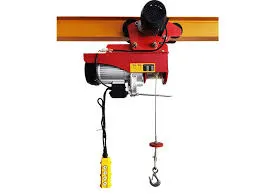


Fall Protection FAQs Understanding Safety in the Workplace
In many industries, particularly construction and maintenance, fall protection is a critical aspect of workplace safety. Understanding the basics of fall protection can help employers ensure a safer environment for their workers. Here are some of the frequently asked questions regarding fall protection.
What is fall protection?
Fall protection refers to systems or methods used to prevent workers from falling from elevated surfaces, such as rooftops, scaffolding, or ladders. It includes various equipment and strategies, such as guardrails, safety nets, personal fall arrest systems (PFAS), and training.
Who needs fall protection?
Any worker who is at risk of falling six feet or more in general industry settings or four feet in construction sites needs fall protection. This applies to tasks like working on ladders, scaffolds, or rooftops. Employers are responsible for evaluating their work environments to identify potential fall hazards.
What are the types of fall protection systems?
There are mainly three types of fall protection systems
1. Warning Line Systems These are used to alert workers to potential fall hazards and keep them away from unprotected edges. 2. Guardrail Systems These physical barriers around elevated surfaces prevent falls from occurring. 3. Personal Fall Arrest Systems (PFAS) These consist of a full-body harness connected to a secure anchorage point via a lanyard, effectively stopping a fall if one occurs.

What training is required for fall protection?
Employers must provide training to ensure that employees understand how to identify fall hazards and the correct use of fall protection systems. This training should cover the types of fall hazards, fall prevention methods, inspection of equipment, and emergency response procedures.
How often should fall protection equipment be inspected?
Fall protection equipment must be regularly inspected before each use and at least annually by a qualified person. Inspections help ensure that safety gear is functioning properly and free from defects. Workers should also be trained to recognize when equipment is damaged and needs to be taken out of service.
What should I do if I witness unsafe fall protection practices?
If you observe unsafe practices, it’s crucial to report them immediately to your supervisor or safety officer. Safety is a collective responsibility, and addressing unsafe practices can prevent potential injuries or fatalities.
Conclusion
Fall protection is essential in safeguarding workers from the risks associated with falls. By understanding the regulations, being aware of equipment types, and prioritizing training, employers can create a safer working environment. Remember, an informed workforce is a safer workforce, so continuous education and adherence to safety protocols are key to minimizing fall-related incidents.



